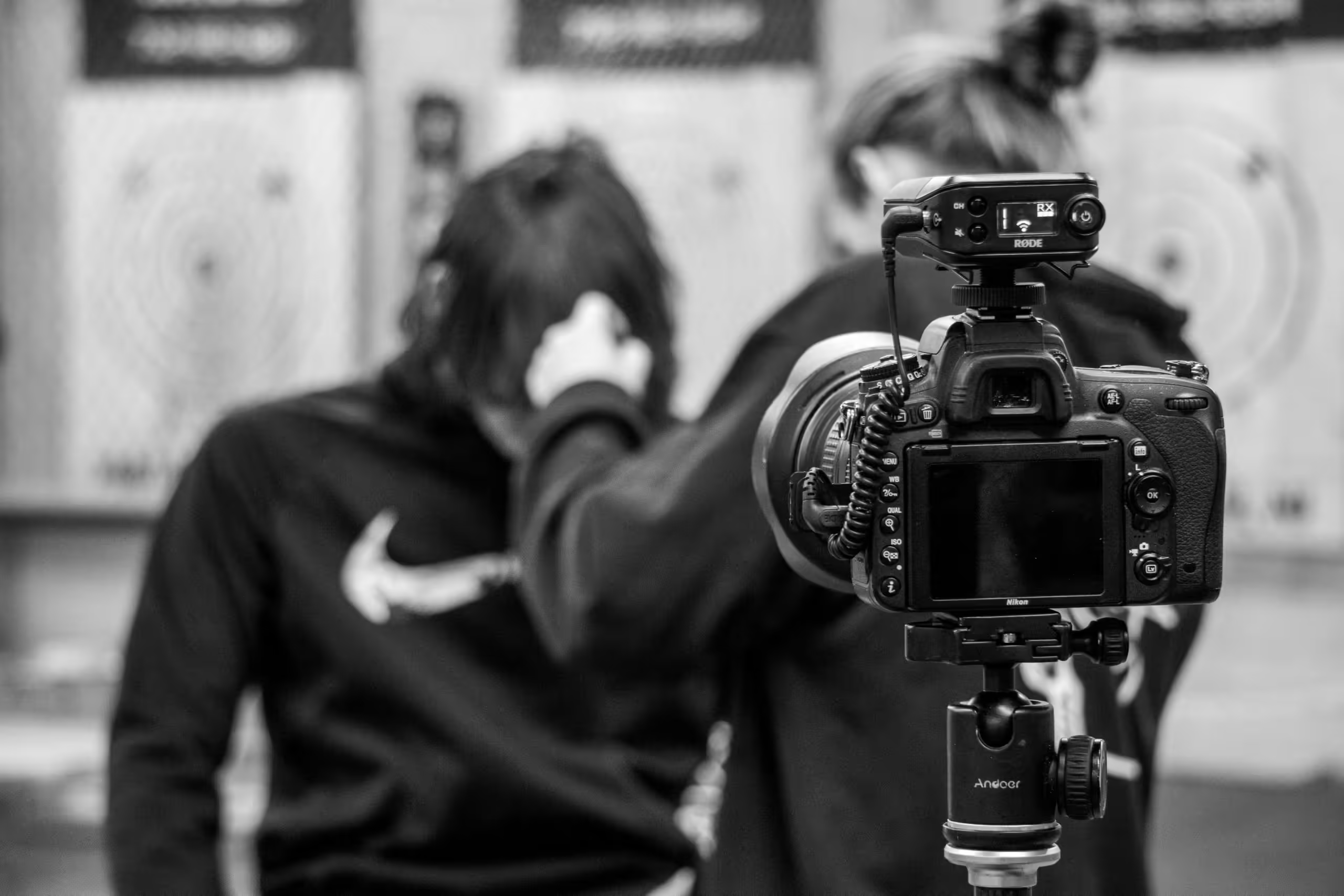Introduction to Video Interviews
As advancements in technology and the ascent of remote work redefine conventional hiring practices, video interviews have swiftly become a standard component of the recruitment process. The convenience and efficiency they offer both employers and candidates are undeniable. Organizations can swiftly connect with potential hires regardless of geographical barriers, significantly reducing time and costs associated with traditional in-person interviews.
The surge in remote work has magnified the importance of mastering video interviews. The technology setup for these virtual meetings often includes a reliable internet connection, high-quality web camera, and clear audio equipment, all of which are paramount to ensuring smooth communication. As businesses adapt to a more digital landscape, the competency to present oneself effectively through an online presence has transitioned from being merely advantageous to essential.
Despite the evident benefits, video interviews pose unique challenges. For instance, the absence of physical presence can make it challenging to build rapport and read non-verbal cues, which are integral to effective communication. Ensuring a professional backdrop and minimizing distractions are critical to conveying a focused and dedicated image. Additionally, technical difficulties such as software malfunctions or connectivity issues can disrupt the flow of conversation, inadvertently impacting the candidate’s performance.
Understanding these dynamics is critical for candidates aspiring to thrive in video interviews. Mastery of the required technology setup, coupled with an awareness of the nuances of presenting oneself virtually, can significantly enhance one’s ability to leave a lasting positive impression. As the landscape of employment continues to evolve, the skills learned from acing video interviews will remain valuable, both now and in the future.
Pre-Interview Preparation
Thorough preparation for a video interview is paramount to showcasing your commitment and professionalism. Begin by extensively researching the company. Understanding the organization’s history, mission, and values can provide valuable context and frame your responses to align with the interviewer’s expectations. Familiarize yourself with any recent news, projects, or developments pertaining to the company to demonstrate your proactive interest during the conversation.
Equally important is grasping the nuances of the job role you are applying for. Review the job description meticulously, noting key responsibilities and required qualifications. This step allows you to tailor your responses to highlight relevant experiences and skills, making a compelling case for why you are the ideal candidate. Furthermore, connecting your past achievements to the role’s requirements can help illustrate your potential to contribute effectively to the team.
Practicing common interview questions is another crucial aspect of preparation. While it is impossible to predict every question, rehearsing your answers to typical inquiries—such as discussing your strengths, weaknesses, and career aspirations—can enhance your confidence. Additionally, practice articulating responses to behavioral questions, which often explore how you handled challenging situations in previous roles.
Another essential component of pre-interview preparation is the technology setup. Ensure your internet connection is stable, and familiarize yourself with the video conferencing platform the company uses. Test your microphone, camera, and any other relevant equipment beforehand to avoid technical difficulties during the interview. An organized and quiet environment is also imperative; it reflects your seriousness and facilitates a professional interaction.
Comprehensive preparation not only equips you with the necessary knowledge and confidence but also underscores your dedication and professionalism. By investing time in understanding the company, job role, and common interview practices, alongside optimizing your technology setup, you set a solid foundation for a successful video interview.
Technical Setup and Equipment
Ensuring a seamless video interview experience hinges significantly on the technical setup and equipment in use. Central to this is a reliable internet connection, vital for maintaining uninterrupted communication. It is recommended to have a high-speed broadband connection to prevent lag or connectivity issues that could disrupt the flow of the interview. A wired Ethernet connection is often more stable than Wi-Fi, adding extra assurance for a smooth session.
Equally important is the quality of the video feed, which relies on a good quality webcam. While most modern laptops are equipped with decent built-in cameras, investing in an external HD webcam can offer superior image clarity and a more professional appearance. This becomes crucial when visual cues play an important role in communication. Pay attention to the camera angle, ensuring it is positioned at eye level, which helps in establishing better visual rapport.
Audio quality can make or break a video interview. An effective microphone, preferably a USB or external mic, will significantly enhance the clarity of your voice. Built-in laptop microphones often pick up background noise, which can be distracting. Testing the audio levels prior to the interview can prevent potential sound issues, ensuring your responses are heard clearly without disruption.
Proper lighting is another critical factor often overlooked. Natural daylight is ideal, yet it may not always be possible. In such cases, a combination of ambient and task lighting can mitigate shadows and enhance your visibility. Position the light source in front of you, at a slight angle, rather than behind, to avoid backlighting, which can make your face appear in shadow.
Finally, it’s imperative to test all equipment ahead of the scheduled video interview. Running a trial session can help identify and address any technical glitches beforehand, ensuring that your online presence is confidently presented. Having contingency plans, like a smartphone with a video conferencing app as a backup, can also alleviate last-minute stress. By meticulously preparing your technical setup, you contribute to a professional and seamless video interview experience.
Creating the Ideal Environment
Establishing an optimal setting for video interviews is paramount for making a positive impression. Selecting a space that is quiet, tidy, and free from distractions is the first step towards achieving a professional demeanor. A properly chosen environment conveys to your interviewer that you are serious and well-prepared.
Begin by finding a room or area in your home where external noise is minimal. The presence of household sounds, such as talking, television, or traffic, can be disruptive and detract from your focus. Inform household members about your interview schedule to avoid unplanned interruptions and potential distractions during the call.
Your background plays a significant role in maintaining a professional online presence. Opt for a neutral setting that is clean and clutter-free. A simple wall or a tidy bookshelf can serve as an appropriate backdrop, ensuring that the interviewer’s attention remains on you. Avoid backgrounds that are overly personal or busy, as they can divert focus and create an unprofessional atmosphere.
Lighting is another crucial aspect of setting up your interview space. Ensure that your face is well-lit by using natural light or strategically placed lamps. Positioning yourself facing a window can provide even and flattering illumination. Avoid having bright light sources behind you, as they can create harsh shadows and make it difficult for the interviewer to see your face clearly.
Technical readiness is equally important for a smooth interview experience. Test your technology setup in advance to ensure everything is functioning correctly. Check your camera angle and audio quality, making adjustments as needed to achieve clear visuals and sound. This proactive approach can help prevent last-minute issues and ensure you are fully prepared.
By carefully selecting and optimizing your interview environment, you can significantly enhance your ability to present yourself effectively and professionally during the video interview.
Professional Appearance and Body Language
In the context of a video interview, presenting oneself professionally is crucial. Much like an in-person meeting, dressing appropriately sets the tone for your engagement with the interviewer and indicates seriousness about the position. Adhering to a business attire dress code can create a lasting positive impression, highlighting your attention to detail and respect for the interview process. Although you are at home, it’s vital to avoid casual attire, as it may inadvertently communicate a lack of professionalism or preparedness.
Equally significant is the role of body language in a virtual interview setting. Unlike traditional in-person meetings, where nuances in body language are more readily apparent, video interviews necessitate nuanced adjustments to convey confidence and engagement effectively. One fundamental aspect to consider is maintaining eye contact. To replicate the impression of direct eye contact, focus on the camera lens rather than the screen. This subtle adjustment can foster a connection with the interviewer, making your responses feel more personal and genuine.
Smiling during the conversation also plays a vital role in establishing a positive rapport. A genuine smile can make you appear approachable and friendly, characteristics that are highly valued in any professional environment. Additionally, utilizing positive gestures, such as nodding in agreement or leaning slightly forward while speaking, can communicate your interest and enthusiasm about the role. These actions, although minor, collectively contribute to portraying a confident and engaged demeanor.
Being aware of your posture is another essential element. Sit up straight with your shoulders back to reflect attentiveness and confidence. Avoid crossing your arms, as it may be perceived as defensive or uninterested. Instead, keep your hands visible and use gentle hand movements to emphasize points where appropriate, ensuring they appear natural and not exaggerated.
Incorporating these best practices into your video interview approach will help you present a professional image and effectively communicate your qualifications, thereby increasing your chances of success in the virtual meeting environment.
Effective Communication Skills
Effective communication is a cornerstone of success in video interviews. Clear, articulate speech is paramount; ensure you speak at a moderate pace to enhance comprehension. Avoid speaking too quickly, as it can make your message harder to follow, and equally, steer clear of speaking too slowly, which may suggest a lack of confidence or enthusiasm. Furthermore, minimizing the use of filler words such as “um,” “like,” and “you know” will contribute to a more professional and polished presentation.
Active listening is another critical aspect of effective communication during a video interview. Demonstrating active listening can be achieved through subtle nods, maintaining appropriate eye contact with the camera, and slight verbal affirmations like “I see” or “I understand.” Keeping concise notes can be particularly useful, enabling you to reference key points later in the conversation and to formulate relevant and insightful questions. Thoughtful inquiries not only display your engagement but also your interest in the role and the organization.
Additionally, it’s essential to align your non-verbal communication with your verbal message. Ensure your body language is open and welcoming; sitting up straight and leaning slightly forward can project interest and attentiveness. Remember to smile where appropriate, as this can make you appear more personable and approachable.
In summary, mastering communication skills for a video interview encompasses clear speech, active participation, and mindful body language. By actively listening, articulating your thoughts clearly, and engaging meaningfully, you can make a strong impression and enhance your online presence in a virtual interview setting.
Handling Technical Glitches
Handling technical glitches during a video interview can be a critical test of your problem-solving skills and composure. Despite all preparations, unexpected issues may still arise. The key to maneuvering through these glitches lies in having a well-thought-out backup plan and maintaining your calm. Firstly, ensure you have alternative devices at hand. Whether it’s a tablet, another laptop, or even your mobile phone, having these devices ready ensures you can swiftly switch platforms if needed. This helps in minimizing disruption and keeping the interview process on track.
In scenarios where connectivity is interrupted beyond rectification, a phone call becomes a valuable contingency. Inform your interviewer beforehand about your proposed backup solutions, so there’s mutual agreement on how to proceed if a technical glitch occurs. Additionally, familiarize yourself with the video conferencing software you will be using. Spend time navigating features such as rejoining the call, adjusting audio and video settings, and sharing screens, aiding in your readiness for any minor technical hurdles.
Staying composed under pressure is equally paramount. Exhibiting calmness when technology falters underscores your ability to handle stressful situations effectively. Take a moment to breathe, inform your interviewer of the issue calmly, and work methodically toward a solution. This approach reflects positively on your problem-solving and communication skills. Moreover, ensure your internet connection is secure and stable before starting the interview by conducting a speed test. It helps in identifying potential issues in advance.
Preparation, practice, and an unwavering demeanor are vital in mitigating the disruptions caused by technical glitches. These strategies not only help ensure a smoother interview process but also highlight your adaptability and technical proficiency in an increasingly digital professional landscape. By approaching these potential challenges with a detailed plan and steady composure, you reinforce your readiness and competence for the role at hand.
Post-Interview Follow-Up
After completing a video interview, your actions in the subsequent hours and days can significantly impact the overall impression you leave. One of the foremost steps is sending a thank-you email to the interviewer. This gesture not only shows gratitude for the opportunity but also reiterates your enthusiasm for the position. Address the email directly to the interviewer or interviewers, personalize it by mentioning specific points discussed during the conversation, and express your continued interest in the role and the company.
In addition to showing appreciation, the thank-you email serves as an opportunity to reinforce your qualifications. Briefly highlight aspects of your background that closely align with the job requirements. Reiterating these points reminds the interviewer of your suitability for the position and demonstrates your keen attention to detail.
Reflecting on the video interview itself is another crucial step in the follow-up process. Take some time to evaluate your performance by considering what went well and where you could improve. Analyze aspects such as your responses to questions, your technology setup, and how effectively you conveyed your skills and experience. By assessing these elements, you gain insights that can enhance your performance in future video interviews.
Furthermore, consider seeking feedback from the interviewer if you feel it appropriate. This can provide direct insights into your performance and offer valuable pointers for improvement. However, keep any request for feedback polite and respectful, as not all interviewers may be inclined or permitted to provide detailed responses.
Lastly, make sure your online presence mirrors the professionalism you demonstrated during the interview. Companies often peruse candidates’ social media profiles and online portfolios as part of their assessment. Ensure your profiles are up-to-date, professional, and reflective of the qualifications and demeanor you displayed during the video interview. This holistic approach reinforces a cohesive and positive impression, which can be crucial in securing the job.



